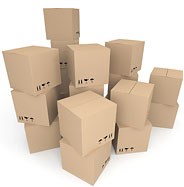How is it that something as lightweight as paper can safely act as a receptacle for something more than 500 times its own weight?
How is it that something made to ship a small printer ink cartridge from Amazon be the very same thing suitable to live and die in? After all, tiny houses and coffins have been made of it.
The corrugated box is, in large part, an engineering marvel. Its strength originates from the pulp of nature’s giants – trees – and the small tube-like material call flute, which not only provides stability and strength, but a sophisticated shock absorber sandwiched between pieces of wafer-thin fiberboard.
Even after it’s tossed and dropped, punched and stepped on, stacked and stored diagonally, it still manages to somehow protect its contents as it travels from maker to factory to truck, rail and air, and on to its destination – across town and country and world. It can withstand well over 126 pounds per square inch, yet cut easily with a small knife. Ninety five percent of its square area is thin air.
It’s far more than just paper and glue.
The site, How Stuff Works, describes corrugated’s “truss”– its flute innards and fiberboard skin – this way: “a series of paper I-beams lying next to each other,” not unlike the skeletal structure of an iron bridge.
Corrbox provides myriad sizes and certified strengths of corrugated to meet every conceivable need. Contact us today or call (949) 248-5880.



